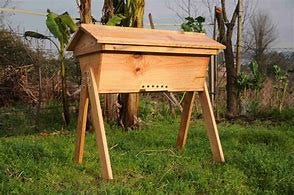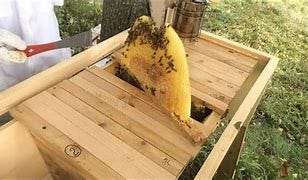The American critic and essayist Edmund Wilson taught himself Russian in order to read Tolstoy and Pushkin (he said you couldn’t possibly grasp that Pushkin is as great as Shakespeare unless you can read him in his native language). In an essay on the difficulties of that exercise, he came out with some telling apercus which also apply to beekeeping.
He said the first moments of studying Russian are a pushover. Anybody can master the Cyrillic alphabet in about 20 minutes. “Oh, this is dead simple,” you think. “Why does everybody make such a fuss about the difficulties of learning this language?”
Very quickly, you pick up some scraps of vocabulary and a few regular verbs which completely make sense and you think, “Wow! I must be a natural in this lark.”
Then you encounter some irregulars. Then come the irregulars of the irregulars. Soon, you are beginning to glimpse the scale of the challenge. “It’s like setting off for a gentle Sunday afternoon stroll out of your back-door,” says Wilson “and finding yourself in the Hindu Kush.”
This also, in my experience, applies to beekeeping. You go to some lessons; read a few books; buy a suit, a hive and some bees; get started - and promptly find yourself completely out of your depth. Like a new swimmer floundering upside down in the deep end, you will then spend what feels like a lifetime struggling to the surface to catch a breath.
Seven years after I went to my first class, I still feel like a beginner in beekeeping. Last week, however, when I was plodding in the foothills of this pursuit, I rounded a corner and came in sight of Kangchenjunga.
This glimpse of the sacred peak which may even lead to the final summit was delivered to me by a sherpa called Phil Chandler in a talk for the Scottish Beekeeping Association called Top-Bar Beekeeping. That may not sound very thrilling but I suspect it might give me new life as a beekeeper.
Phil – a genial cove who looks and sounds like a leftover of my baby-boomer generation – is the author of The Barefoot Beekeeper, a book which may now become my beekeeping bible.
Sherpa Phil
Two months ago, when my colonies died, I felt such deep despair that I was close to giving up beekeeping altogether. In recent weeks, however, thanks to the SBA’s talks on Zoom, I have virtually encountered two teachers who have led me to new perspectives and given me new hope.
First came Professor Tom Seeley whose studies of feral bees in the woods of NE America convinced him of the virtues of the Warre′ hive. Now comes Phil Chandler as an advocate of the top-bar hive.
Both of these experts have effectively arrived in the same intellectual place. They have both learned to understand that, after 150m years of evolution, honey bees are best at managing themselves. Therefore, the job of the beekeeper is largely, as Phil says, “to provide them with a convenient, weather-proof container and to keep out of their way”. Both are supporters of natural, unintrusive methods of management whose essence is simplicity.
The top-bar hive originated in Kenya as a facsimile of the hives that bees make in tree cavities. That’s why it looks like a log on legs.
Typical top-bar hive
As with a Warre′ hive, bees in the top-bar build their comb hanging downwards in trapezoid shapes, rather than the rectangles which are imposed upon them in the frames of a conventional hive. As a result, the honey may harder to harvest and it will come only in comb form but that diminished haul is part of the point.
Bees naturally create and store honey because they need it as food for winter. Beekeepers who extract every gram of honey from the hive for their own use or for sale will then have to replace those stores with sugar syrup or fondant as feed for winter, otherwise their bees will starve to death. The more you think about that practice, the more it seems counter-productive and abusive. Why not just let the bees keep the honey they need and simply remove any surplus?
An incidental benefit of that approach is that anybody who eats your honey will know for sure that it is authentic and unadulterated with syrups, as is the case with so much of the so-called honey on the supermarket shelves. Why? “You can’t forge comb honey,” as Phil Chandler said.
Harvesting honey comb from a top-bar hive
“OK, then,” I was thinking. “I’ve got an empty Warre′. I can build a top-bar. Then I could use the boxes of my National hives to make swarm traps in order to collect bees. If that all works, I’ll be back in business.”
So that was the approach I had decided upon when my bee buddy came a-calling.
I hadn’t seen Dennis this year. As he arrived on the morning of 4 April, we not only wished each other “Happy New Year” but also “Happy New Tax Year”, which made us both wince. Then we sat down at my kitchen table to drink coffee, eat biscuits and talk bees.
Somewhat to my surprise, Dennis endorsed my ideas. He agreed that the conventional National hive is a factory for disease and Varroa mites. He accepted that the practice of first stripping the hive bare of honey and then feeding the bees on processed sugar is bizarre and contradictory. He admitted that ramming hives close together in apiaries is bound to lead to the spread of infection.
He gave me some tips on creating bait hives and positioning them in the trees around my land. He said the best time to put them up would be the middle of May, which gives me time to make the top-bar hive.
Then he said, “If you don’t manage to collect any swarms, I’ll give you some of my bees. I’m bound to have some to spare.”
That’s what you call a buddy.




